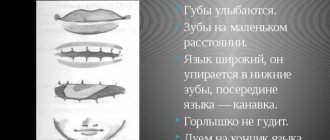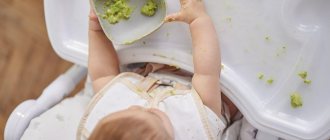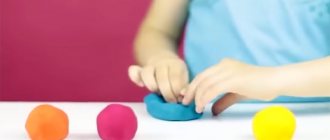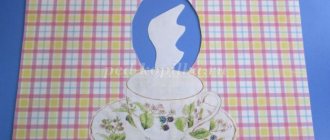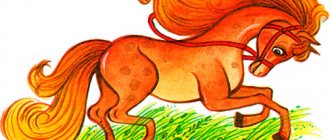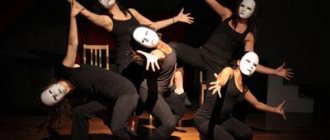Hello, dear readers! Do you know such dishes that do not break, do not break and wash themselves? “Probably some kind of nano-ware or just disposable” - you will think, and you will be wrong, because there is such a cup (C) that is always with us and has all these properties, this is an articulation exercise cup. And it is done with the tongue (I), if you don’t know how, I will teach you. The main thing is desire, patience and a lot of effort - and you will get the best h in the world.
What is the exercise for?
This exercise is very important for staging and automating many sounds. Therefore, all those who want to speak clearly, beautifully and without mistakes cannot do without it. And making hissing sounds in general is problematic if the child does not know how to fold the tongue in the right way, if it looks like a bun and the air spreads from its sides along the cheeks, and does not go out to the front teeth, as it should be normally.
In order to mold a “cup” from a “bun” you need to relax your tongue well and have visual control over the process. Therefore, it is advisable that there is a mirror of sufficient size in front of the child, allowing him to see the reflection of his face, and it is better if an adult also fits there, so that the child can see “how to do it correctly” and compare it with what he can do.
Despite its apparent simplicity, the exercise actually requires a combination of proper muscle function, their sufficient flexibility with a precisely directed air stream, which is regulated in strength and duration. I will talk about the combination itself in an article devoted to the production of hissing sounds; here we will only talk about how to achieve the desired shape of the Self and its mobility.
Speech problems in children
Speech disorders in children can be caused by the following reasons.
Phonetic underdevelopment
Perhaps the most common type of violation is the incorrect pronunciation of one or more sounds. Before a speech therapist, you can visit an orthodontist - sometimes the problem can be solved by cutting the frenulum.
Phonetic-phonemic underdevelopment
With such a violation, the baby cannot even hear the sound correctly. Difficulties arise with speech, writing, and learning languages. Ask your child to repeat after you the chains of words: “dom-som-kom-lom” or syllables: “gu-ku-gu-ku.” If he makes a mistake, this is a warning sign.
General underdevelopment
Poor vocabulary, difficulty expressing thoughts, inability to write a description of a picture... As a rule, such children begin to speak later than their peers. They find it difficult to concentrate and remember. In addition to a speech therapist, you will most likely need a neurologist.
Pathologies associated with injuries, heart defects, damage to the nervous system
Examples of such pathologies include alalia, aphasia and dysarthria.
Alalia occurs due to damage to the nervous system. The child speaks very poorly, and his speech is meaningless, or he does not speak at all. Also, sometimes a baby may suffer from movement disorders, hyperactivity, or, conversely, retardation.
If alalia implies that speech initially develops incorrectly or does not develop, then aphasia is an acquired disorder. It can be caused by damage to the cerebral cortex, head injuries, and heart defects. With aphasia, children do not understand other people's speech and do not control their own, do not remember words well, and change sounds and syllables.
Dysarthria is a relatively rare disorder in which a person's speech is slurred and slurred. Dysarthria is provoked by disturbances in speech breathing and articulation, which are associated with lesions of the nervous system.
Such problems need to be dealt with comprehensively - with the help of neurologists, teachers, psychologists and speech therapists.
How to learn to do it?
There are several ways to learn how to do Ch, all of them are based on relaxing certain parts of the Self. At the same time, we do speech therapy massage, as well as self-massage of the Self. One of the simplest: put a wide, soft Self on the relaxed lower lip, then ask the child to “cup the tongue.” Show yourself what it should look like.
Very often the baby cannot do this, then you need to show how to “make a hole” with your finger, resting it in the middle and stepping back a little from the tip. I have to reflexively form a cup. If this does not happen, then the tone of the Self is broken and this needs to be corrected. As I already wrote above, massage (there will be a separate article about it) and self-massage, it is available to everyone, the main thing is to do it carefully and not damage the mucous membrane.
Self-massage techniques are very easy and accessible, the main thing is to use them in such a way that they do not cause negativity in the child. Sometimes the process can take a long time, especially with dysarthria. You need to be patient and come up with a large number of gaming techniques. And don’t forget about sanitation and hygiene, keep your hands clean, rinse your mouth before and after classes, use handkerchiefs or gauze pads so that there is no direct contact with the surface.
How do you know when it’s time to work on your child’s speech?
Initially, the child learns to pronounce sounds, then to put them into words, then to construct phrases and express thoughts. You should not expect from a two-year-old child impeccably clean pronunciation and beautiful speech, observing genders and cases. In addition, until the age of three, a child will not be able to concentrate on classes for more than 10 minutes.
The optimal age for starting classes for a healthy child is four to five years. By six he should already be able to pronounce sounds correctly and express his thoughts coherently. It is better to correct the pronunciation before the molars grow in.
Classes are needed if:
- the baby pronounces individual sounds incorrectly;
- the child rearranges syllables in words, constructs phrases incorrectly, confuses cases, gender, and numbers;
- “porridge in the mouth”;
- speech is too fast, slurred;
- the child stutters;
- the baby has suffered a birth injury or infectious disease;
- The child was diagnosed with hearing impairment, mild mental retardation, and developmental delay.
Even if you are not going to take your child to a speech therapist on an ongoing basis, it is worth bringing him for a consultation - you will receive recommendations for home activities. It is also advised to show the child to a speech therapist before school, even if there are no obvious problems.
The problem of speech disorders is not always purely speech therapy - sometimes it makes sense to correct pronunciation only after treatment.
Self-massage
Everyone starts with the “pancake” exercise, with the mouth wide open. First, we simply hold the I in this position for a count of 10. Then we slap the I with our lips “five-five-five” and our teeth “cha-cha-cha”, “combing” the I. We move it forward and back between the closely pressed teeth. Or we scratch it using the “slide” exercise. We “eat” the tongue - we move it back and forth between the teeth, biting it, as if we were first “chewing” it, then pushing it out of the mouth.
We make the I as wide as possible and bite his sides, either left or right. It is best to do this under the supervision of a specialist to avoid injuries and complications. You can also simply pat the protruding I lightly with your hands so that it becomes flatter and wider. In order for the baby to remember the sensations of the wide Self, it is necessary to contrast either the narrow or the wide Self. Fixing attention on how pleasant it is when the Self is relaxed and wide.
How to create an activity at home?
The main principles of homework:
- Regularity. Exercise every day, but without overloading the baby and taking into account his age and well-being. You can start with 3-5 minutes a day, gradually increasing to 15-25.
- Game form. Only you know what your child will like most: retelling an interesting story or a competition to see who can pronounce a tongue twister the fastest. Start with tasks that are more interesting to your baby, gradually moving on to less exciting ones.
- Comfortable environment. For many types of activities you need, at a minimum, a table, a comfortable chair, and often a mirror on a stand.
- Patience. It is impossible to achieve amazing results in one mini-lesson. Encourage your child, praise him for successes and don’t get angry for mistakes, don’t laugh or imitate. Otherwise, the baby will withdraw into himself, and speech problems may worsen.
- Do not do tasks for your child if he cannot cope with them. The point of the classes is to benefit the baby, and not to impress the speech therapist.
Passive gymnastics
And we move on to passive gymnastics, when the Self is given the desired shape with the help of hands. If the child is already more or less able to expand the tip of the I, then we take it and slightly turn it back. It’s better from the “tongue tube” exercise, when the baby starts to unroll it, we try to wrap the tip. After the h begins to turn out, it is necessary to achieve its stability and lability. The most important thing is to move it behind the upper teeth.
This is very easy, but only on the condition that there are no malocclusions or dystonia. In such cases, the jaw “breaks.” We have to re-work the I position in the H shape, but this time in the form of a “sail” exercise.
Causes of speech disorders in children
- Heredity – mental retardation, hearing impairment in parents.
- Intrauterine pathologies (the mother suffered a viral disease during pregnancy and was injured). They develop when the fetus is between 1 and 4 months old.
- Premature birth and birth injuries leading to intracranial hemorrhage.
- Diseases and injuries in the first years of life: rickets, whooping cough, meningitis, damage to the skull or palate, inflammation of the middle ear.
- Psychological reasons: parents do not communicate with the child, treat him poorly, leave him alone too often.
Articulation gymnastics “tea party”
We drink tea with sweets, pancakes, jam, sweet straws, and blow on tea.
- pancake - cup (we place a wide tongue on the lip, then wrap the tip in the shape of a cup)
- calyx - tube (we fold the tongue either into a tube or into a cup)
- candy - cup (we suck the tip of the tongue to the upper lip - cup)
- honey - calyx (tongue “stuck" to the upper lip - calyx)
- jam - a cup (we lick the upper lip from top to bottom, then left and right)
- cup - toffee (I in the shape of H rises up by the teeth, as if it wants to remove the glued toffee (chewing gum) from there)
- blow on tea - a cup (tapped the lip “five-five-five”, blew on tea, drank a cup)
After the child has learned to hold the Ch well, and also easily move into a tube and raise it like a “sail,” then it is quite possible to move on to the production of the upper sounds: D - T, hissing, sonors. Add breathing exercises that help you practice the direction of the blown air stream strictly in the middle. I will tell you about this in separate articles on setting R, Sh and breathing exercises.
And this is where I end this article, write your questions and comments in the comments. Share your impressions on social networks with friends and acquaintances.
Types of activities for speech development
Articulation gymnastics
This is a set of exercises that develop the speech apparatus and promote the production of sounds. Articulation gymnastics helps to pronounce words clearly and clearly even without the help of a speech therapist. Suitable for overcoming any speech defects.
You need to exercise twice a day every day. Each lesson is 3-5 minutes, each exercise is five times. You can add no more than one new exercise per day. All classes must be conducted sitting in front of a table mirror. It’s good if the mother or father does them together with the child.
Examples:
1. “Tube”: the lips are pulled forward, the teeth are closed.
2. “Barrier”: the tongue rises behind the upper teeth, the mouth is slightly open.
3. “Swing”: the tongue moves down and up alternately, in each position for several seconds.
4. “Fence”: the lips are held in a smile, the upper and lower front teeth are exposed. 5. “Pancake”: a relaxed tongue is held behind the lower teeth.
6. “Stretch”: the tongue sticks out and reaches for the nose, chin, and corners of the mouth in turn. 7. “Mushroom”: the child should smile, open his mouth wide and suck his wide tongue to the roof of his mouth.
8. “Horse”: the mouth is open, the lips are held in a smile. You need to suck the tip of your tongue to the roof of your mouth and start flicking your tongue. Performed 5-6 times.
9. “Cup”: smile, open your mouth and bend the edges of your tongue in the shape of a cup.
It is important to learn how to hold the chosen pose for the required time - for example, counting from 1 to 5 or 10.
Development of fine motor skills
The speech center of the brain is located close to the motor center. Scientists have proven that if you develop the fine motor skills of a child’s hands, that is, teach him to perform small, precise movements with his hands and fingers, the speech center will also become active. Such exercises are useful for any speech disorders.
Exercises:
- Games with plasticine. For younger children, it is enough to knead it and sculpt figures of one color; for older children, assign multi-colored figures that are more complex.
- Sorting small items (especially important in the third year of life). Mix two types of beads or buttons, peas and beans, shells and pebbles in one container and ask your child to separate one from the other. You can “tailor” some story to this - for example, one doll likes peas for dinner, and the other likes beans. Gradually complicate the task - let there be objects of three, four or more types in one container. The baby should perform the exercise with two or three fingers and bend the rest.
- Exercise with bulk substances. Teach your child to pour cereals, peas, and lentils from one dish to another (glass, bottle) using a spoon or funnel. Dip small toys and beads into the sand and ask your baby to find them and pull them out with his fingers.
- Rolling balls. The child rolls small balls on a flat surface with his palm or finger and does not allow them to slip out.
- Playing with paper. The child crumples, tears and kneads a piece of paper, learning to put it in the trash can.
- Exercise with raisins. Roll out the dough and invite your child to decorate it with raisins. Let him take each one with two fingers and place it at a distance from each other.
Finger games
One of the types of exercises is “finger games”. This is a short dramatization (often rhythmic, poetic) of stories, fairy tales using fingers. The child repeats the movements of adults.
Examples:
- I knock with a hammer (my fists knock against each other), I want to build a house (the fingertips of both hands are connected, depicting the roof of the house). I am building a tall house (palms, touching each other, rise up), I will live in that house (clap our hands).
- We wrote, we wrote (we depict the process of writing), our fingers were tired. Let's shake our fingers (shaking the hands) and start writing again (a movement similar to that at the beginning of the exercise).
- Four brothers walk towards the eldest (we connect our fingers one by one to make a pinch). Hello big! Hello, Vaska-pointer! (connect the thumb with the index finger). Hello, Little Bear! (large - with medium). Hello, Grishka the orphan! (large - with nameless). Hello, little Timoshka! (big - with little finger).
- The fingers played hide and seek and the heads were removed. Like this, like this, and the heads were removed. (All ten fingers rhythmically bend and straighten at the same time.)
- Our fingers woke up, stretched, stretched and shook. They ran, ran, ran, ran, galloped, galloped - and got tired. (We depict all the movements one by one, then shake our fingers and put our hands on our knees.)
- This finger is grandpa, this finger is grandma, this finger is daddy, this one is mommy, this one is me, this is my family! (At first, the hand is clenched into a fist, then we extend it one finger at a time, and at the end there is an open palm.)
It is advisable to perform the exercises slowly, 3 to 5 times: with one hand, then with the other hand, then with both. After each “session,” relax your fingers and hands by shaking them.
There are no strict rules on the frequency of exercise. The main thing is regularity.
Development of auditory perception, phonemic hearing
Without developed auditory perception, correct oral speech is impossible. Show children pictures of animals and ask them to reproduce the sounds they make. While walking, pay children's attention to the sounds of the street and their differences. Play audio recordings with nature sounds and ask your child what sounds and where. Introduce him to audio fairy tales.
Keep jars of pebbles, cones, vessels with water, pipes and whistles at home. Let the child make the sound from them himself.
By the first grade, a child should already have developed phonemic awareness - the ability to hear and distinguish speech sounds. He must be able to determine whether a word contains a particular sound and select words using it.
Exercises:
- "First Sound" Invite your child to name the first sound in the names of the heroes of their favorite fairy tale.
- "Cotton". Pronounce different sounds one by one - let the child clap his hands when he hears the one you asked.
- "Find similarities." Say several words with the same distinct sound and ask your child what they have in common.
- "Guess the object." Make a sound - let the child name the vegetable/fruit/toy that begins with it.
- "Lost Sound" Say the sentence so that the first sound is “lost” in one of the words, and let the child “find” it.
- "True False". Show your baby a thing, name it and repeat the word, first pronouncing one of the sounds correctly and then incorrectly. Let the child indicate which option is correct.
Vocabulary expansion
A rich vocabulary promotes effective communication and successful study, and also signals to others that this is an erudite person with a developed intellect. Vocabulary can be developed without the help of a speech therapist and at any frequency.
Active replenishment begins at approximately 2-3 years. If for a three-year-old it is enough to know about 1,200 words, then for a six- to seven-year-old child, experts estimate the norm at 3.5 thousand. It is important that the baby not only hears a word briefly, but also understands its meaning, remembers it and uses it several times. Then it will be fixed in the active dictionary.
How to help the process:
- Read to your child and with him, and most importantly, let him regularly see how enthusiastically you read books. Be sure to discuss the books you read together.
- Involve the child in the conversation, when talking with him and in front of him, speak correctly, use synonyms and antonyms.
- Play with your child. For example, in the game “Don’t take black and white, don’t say yes and no.” It begins with the question: “Are you going to the ball?” Next, the presenter builds the dialogue in such a way as to force the player to say the words “yes”, “no”, “black” or “white”, and he must answer, avoiding them. If he says it by accident, he loses.
Exercises:
- ask your child to come up with or find synonyms or antonyms for given words in the text;
- “What is a tomato? This is a vegetable. What vegetables do you know?”;
- “What is the sun doing? What morning?”;
- let the child learn to select related words (“table”, “table”, “dining room”, “tabletop”);
- ask for a detailed description of an object or creature;
- suggest matching the name of the animal with the name of its baby.
Breathing game exercises for training speech breathing
Correct speech breathing ensures proper sound production, normal timbre, clarity, volume, and expressiveness. The baby should learn to use air sparingly and control the time of exhalation.
Examples of exercises (each performed 4-5 times):
- "Blowing out the candle." Use a strip of paper as a candle, which is held 10 cm from the child’s lips. He is asked to slowly and smoothly blow on the “candle” so that the “flame” flickers. You need to blow for no longer than 10 seconds, after which there is a 5-second break.
- "Inflating a tire." The child spreads his arms in front of him, says “sh-sh-sh” as he exhales, slowly crosses his arms so that the right one is on the left shoulder and vice versa. Then takes the starting position. Then they clench their hands into fists, taking the “pump handle.” Smoothly bend forward with an exhalation on the sound “ssss.” Straightening, involuntary inhalation.
- "Airplane". Let the baby spread his arms out to the sides, palms up. Raising your head - inhale. Turn to one side with the pronunciation “zhzh”, exhale, stand straight, lower your arms, pause. The same thing - with a turn in the other direction.
- "Hedgehog". Hands on the belt, elbows bent. As you exhale, “puff-puff-puff” and move your elbows forward. Starting position, involuntary inhalation.
- "Crow". Hands rise up through the sides. The child slowly lowers his arms and squats, pronouncing “ka-a-ar” in a drawn-out manner. Starting position, involuntary inhalation.
- "Geese." Hands on the belt, slowly bend the torso forward, while keeping the head down. We pronounce it drawlingly “ga-a-a.” Starting position, inhale.
Performing exercises in which you need to inhale smoothly through your mouth, without lifting your nose, shoulders and chest, and without puffing out your cheeks.
Music games
Helps develop speech hearing and improve voice control.
Will help:
- onomatopoeic songs (“Geese-geese, ha-ha-ha”, “Kwa-kwa, says the frog”);
- games with duplicating sounds with words (the drum “does” knock-knock, boom-boom, bell - ding-ding);
- dances with short words denoting movements (top-top, jump-jump, skok-skok);
- singing sounds with mom or dad (“doo-doo-doo-dudochka”);
- performance of any song to the rhythm of clapping and stamping;
- Guessing a song by rhythm.
